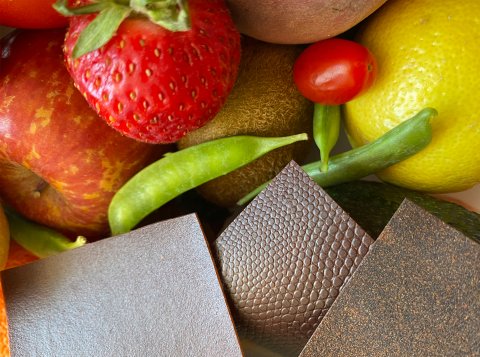
The rising awareness of environmental and social challenges bound to the fashion and clothing industry is steering more and more companies to create increasingly sustainable products. In relation to textiles, this means utilizing recycled, biological or natural materials, in addition of reducing wastes during production.
Linen, hemp, bamboo and Tencel, which is extracted from the wood’s cellulose, are now part of industrial production.
Furthermore, we are witnessing the development of ever more innovative fabrics that utilize advanced technologies like materials based off of algae, cellulose fibrils, and 100% recycled fabrics.
Besides the use of vegetal fibers, thermoregulating textiles obtained from nettle or created with digital printing which allows for an environmental responsible production and an opening to improve the functionality of the supply chain, have remarkable relevance.
These are new opportunities for designers to create unique and functional fashion pieces.
Many of these innovative solutions would not be possible without the relentless study of printing technologies, and of material science. Among the research teams that are active in this field in Milan-Bicocca, there’s the team led by the professor Roberto Simonutti, to which we asked to delve into the use of food waste for the purpose of sustainable textile productions.
“A particularly important aspect in developing sustainable fabrics and materials for fashion” – explains Simonutti – “it’s to utilize wastes originated from the agri-food industry, and in general from the agricultural supply chain. The production of fruit juice, vegetal oils, wine, extracts, sauces and ready meals, generate a notable amount of waste that contains the structural part of the fruit or plant, namely cellulose, hemicellulose, pectin, lignin, and other polymers. Indeed, often these wastes are nothing more than the fruit’s peel or the vegetable’s stalks. Let’s think a moment about the banana’s peel, the tomatoes’ or kiwi’s, what function does it have? To protect the flesh from outside and to avoid its premature rotting, it’s the packaging that nature developed for fruit. If we accomplish to reprocess vegetal wastes in a suitable manner, we can develop the best materials for food packaging. In fact, they would be completely recyclable and in sync with the life cycle of food.
These ideas are at the base of our group’s research activity in the last five years; with Milan- Bicocca’s researcher Michele Mauri together with Doc. Athanassia Athanassiou and Doc. Giovanni Perotto’s group, of the Italian Institute of Technology, we have developed and published an experimental set of protocols for the production of plastic films derived from carrot, avocado, potato and orange peel wastes.
In the midst of the pandemic, this work’s eco has reached California, Specifically in Marina del Rey where the head office of Mink Vegan Shoes is situated; company which offers their high fashion vegan shoes to Hollywood’s celebrities, under the visionary guide of their CEO Rebecca Mink since over 20 years.
Mink has years of experience as a celebrity stylist, and has united her passion for fashion with the protection of the environment and her love for animals, today boasting among her clients and testimonials Miley Cyrus, Pamela Anderson and Jennifer Lopez.
Her entrepreneurial visions had arrived to a critical point: using vegetable materials with leather-like characteristics she was not satisfied with the performance and didn’t consider them suitable for high fashion footwear, so she was looking for scientific partners to develop a new plant-based coated fabric (Mink Materials). She therefore contacted us proposing to jointly develop new vegetable-based materials for shoes, belts and accessories, using our waste processing methods.
It was a simple yet ingenious idea, we had already proven that we could create a mulching film starting from avocado peel, surely we could replicate the leather’s properties through the selection of the right food wastes. We enthusiastically accepted Rebecca Mink’s proposition, and in six months’ time we created a patent pending (within this year) process, that allows to obtain materials that optimally replicate the properties of leather. It was revealed that kiwi peel provides to the end material the best performances, even though it’s possible to utilize a multitude of other wastes”